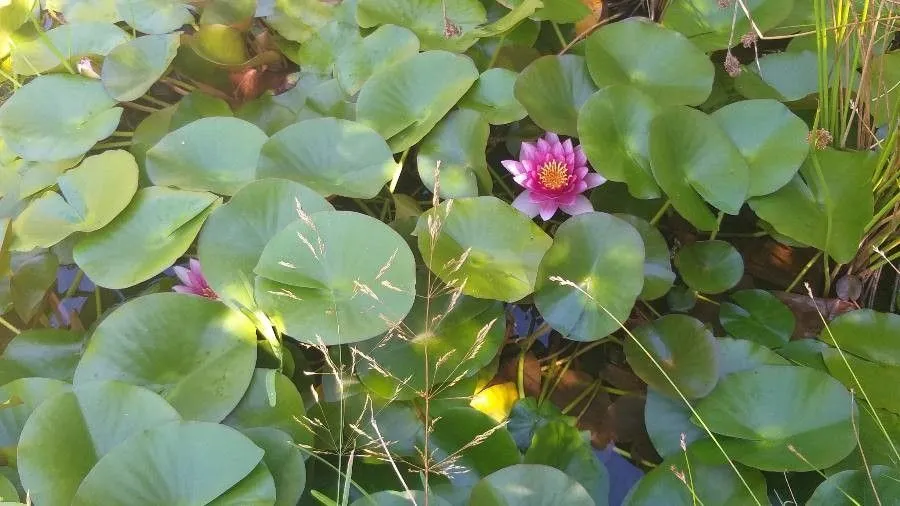
Author: J.Presl & C.Presl
Bibliography: J. S. Presl & C. Presl, Delic. prag. 224. 1822
Year: 1822
Status: accepted
Rank: species
Genus: Nymphaea
Vegetable: False
Observations: Europe to Siberia and W. Himalaya
The Atlantic waterlily, scientifically known as Nymphaea candida, is a captivating aquatic plant classified under the Nymphaeaceae family. First detailed in 1822 by botanists J. S. Presl and C. Presl in their work “Delic. prag. 224,” this species is renowned for its pristine beauty and ecological significance.
Native to a wide geographical range, Nymphaea candida can be found gracing the waters from Europe through Siberia and extending to the Western Himalaya. This distribution underscores the plant’s adaptability to diverse climate conditions and water environments. Typically inhabiting still or slow-moving freshwaters such as ponds, lakes, and quiet streams, the Atlantic waterlily contributes to the biodiversity and balance of aquatic ecosystems.
One of the most delightful aspects of the Atlantic waterlily is its aesthetic appeal. It features broad, round leaves that float serenely on the water’s surface, providing a picturesque display that is both serene and inviting. These leaves are often accompanied by white or slightly tinged flowers, which have a delicate and subtle fragrance. The flowers exhibit a distinct radial symmetry with multiple layers of petals surrounding a vibrant yellow center, making them a favorite among water gardeners and nature enthusiasts.
Beyond its ornamental value, Nymphaea candida plays a vital role in supporting aquatic life. Its expansive leaves offer a habitat and shelter for a variety of microorganisms, insects, and small fish. Moreover, the plant aids in maintaining water quality by oxygenating the water and stabilizing sediment, thereby fostering a healthy aquatic environment.
Overall, the Atlantic waterlily, Nymphaea candida, stands out not only for its striking beauty but also for its ecological contributions. Its widespread presence from Europe to the Himalayas highlights its resilience and the essential role it plays in aquatic habitats worldwide.
Deu: glänzende seerose, kleine seerose
Fra: nymphéa luisant
Nld: noordelijke waterlelie
Nob: kantnøkkerose
Nno: kantnøkkerose, kantnykkerose
Swe: nordnäckros, nordlig vit näckros
Sme: vilgesloppan, vilgesloppas
En: Atlantic Waterlily, Shining Water-lily
Nl: Noordelijke waterlelie
Fr: Nymphéa luisant, Nénuphar blanc boréal, Nymphéa blanc pur
De: Glänzende Seerose, Kleine Seerose
It: Ninfea candida
Se: Vilgesloppan, Vilgesloppas
Nb: Kantnøkkerose
Nn: Kantnøkkerose, Kantnykkerose
Sv: Nordnäckros, Nordlig vit näckros
: Atlantic waterlily
Taken Aug 1, 2019 by Kris Z (cc-by-sa)
Taken Sep 26, 2020 by Dieter Wagner (cc-by-sa)
Taken Sep 18, 2021 by Dieter Wagner (cc-by-sa)
Taken Sep 20, 2019 by Alessia Hawaii (cc-by-sa)
Taken Oct 7, 2021 by Lina De Sousa (cc-by-sa)
Taken Aug 24, 2021 by Terje Norli (cc-by-sa)
Taken Apr 14, 2022 by Jeroen de Graaf (cc-by-sa)
Taken Jun 28, 2020 by Floris Quant (cc-by-sa)
Taken Jul 17, 2022 by juantxorena (cc-by-sa)
Taken Sep 12, 2021 by Manū (cc-by-sa)
Taken Jun 16, 2022 by anne chacha (cc-by-sa)
Taken Sep 12, 2021 by Manū (cc-by-sa)
Taken Jul 22, 2018 by marta civera (cc-by-sa)
Taken Aug 24, 2021 by Terje Norli (cc-by-sa)
Taken Nov 7, 2021 by Daniele Calcada (cc-by-sa)
Taken Jul 20, 2020 by s marisa (cc-by-sa)
Taken Aug 14, 2016 by Aline Mary (cc-by-sa)
© copyright of the Board of Trustees of the Royal Botanic Gardens, Kew.
© copyright of the Board of Trustees of the Royal Botanic Gardens, Kew.
© copyright of the Board of Trustees of the Royal Botanic Gardens, Kew.
Ph maximum: 7.0
Ph minimum: 6.5
Light: 8
Atmospheric humidity: 9
Soil nutriments: 2
Family: Myrtaceae Author: (F.Muell.) K.D.Hill & L.A.S.Johnson Bibliography: Telopea 6: 402 (1995) Year: 1995 Status:…
Family: Rubiaceae Author: Pierre ex A.Froehner Bibliography: Notizbl. Bot. Gart. Berlin-Dahlem 1: 237 (1897) Year:…
Family: Sapindaceae Author: Koidz. Bibliography: J. Coll. Sci. Imp. Univ. Tokyo 32(1): 38 (1911) Year:…
Family: Asteraceae Author: A.Gray Bibliography: Pacif. Railr. Rep.: 107 (1857) Year: 1857 Status: accepted Rank:…
Family: Fabaceae Author: Medik. Bibliography: Vorles. Churpfälz. Phys.-Ökon. Ges. 2: 398 (1787) Year: 1787 Status:…
Family: Aspleniaceae Author: (Cav.) Alston Bibliography: Bull. Misc. Inform. Kew 1932: 309 (1932) Year: 1932…